Call us at 855-464-8873 or Schedule a Consultation
How long does artificial grass last? Well, simply put, you can expect your artificial turf to remain in top shape for approximately 20 years, but up to 25 years with proper care. Several factors will determine whether your turf ends up on the short end or the long end of that range. These include the type of material, the quality of installation, and the level of ongoing maintenance.
ProGreen’s artificial turfs are designed to last a very long time, regardless of those factors. But that doesn’t mean you shouldn’t do what you can to increase your turf’s longevity!
Factors that Affect Lifespan: The lifespan of artificial turf is affected by factors like material quality, maintenance, usage, and environmental conditions.
Durability and Maintenance: The durability of artificial turf is significantly influenced by installation quality, routine maintenance (such as rinsing, brushing, and debris removal), and the use of appropriate materials for different traffic levels.
Environmental Effects: Things like direct sunlight and weather can impact artificial grass, thus necessitating protective measures to prolong its lifespan.

The lifespan of artificial grass can vary significantly, depending on several factors. On average, you can expect your artificial turf to last anywhere between 20 and 25 years. That’s a lot longer than most of your home appliances! It ultimately depends on the quality and maintenance of the turf.
Indeed, technological advancements in manufacturing have led to artificial turf products that are more durable and retain their color longer, contributing to an extended lifespan. At ProGreen, we pride ourselves in the quality of our products for this very reason. However, the life expectancy of your artificial lawn won’t solely rest on the quality of the product. Its longevity is also influenced by factors like installation, maintenance, usage, weather, and environmental effects.

One critical factor that contributes to the longevity of artificial grass is professional installation. When installing artificial turf properly, it not only looks better, but it also lasts longer. Precision in cutting and lining up the turf pieces close to the stitch line, without severing it, is important to eliminate visible seams. Our expert installers take great care to make sure your turf looks perfectly precise.
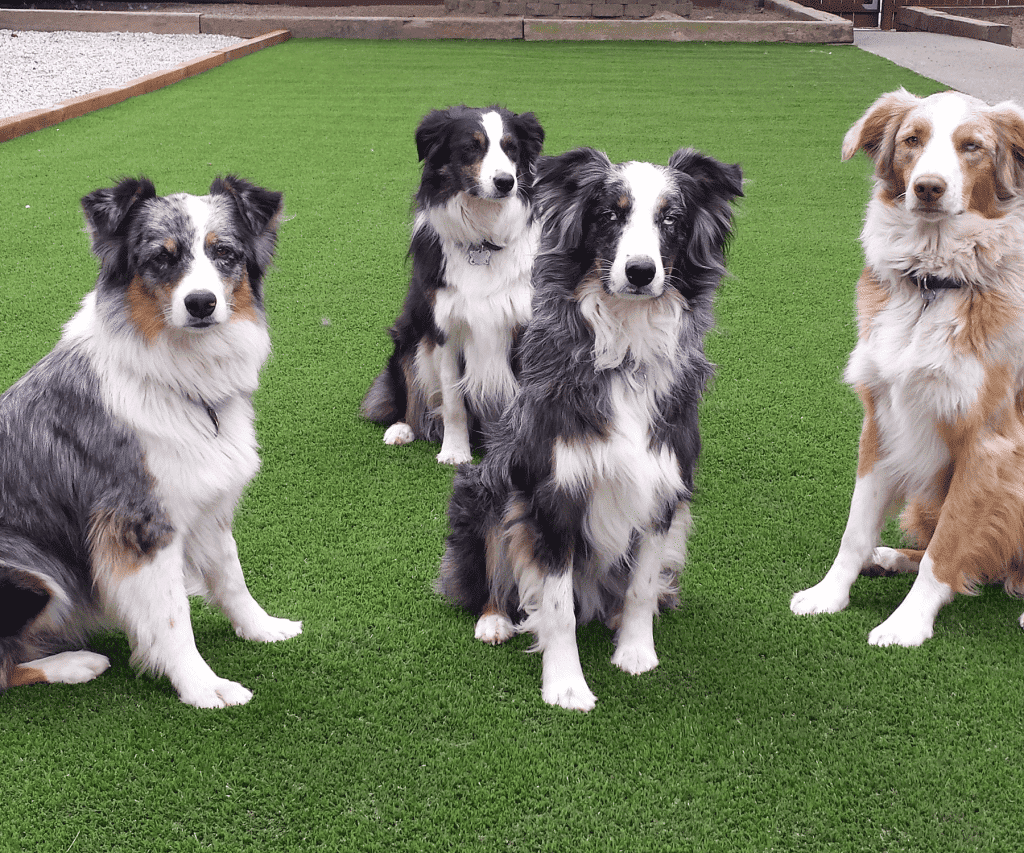
Routine care and preventive maintenance are essential to prolonging the life of artificial grass, especially in areas that get intense use. Some simple tasks to consider include cleaning up after your pets, removing spills promptly, and inspecting the grass for wear and tear.
If your artificial lawn is near construction sites or natural vegetation, it may require more frequent maintenance due to increased debris and dirt accumulation. Similarly, in high traffic areas, particularly during fall, the accumulation of leaves and debris is more pronounced and requires attention to maintain the lawn’s appearance and longevity.
Lifestyle and usage patterns can also influence the durability of artificial turf. Just like a carpet, high foot traffic can cause individual blades of artificial grass to bend, flatten, and switch positions over time, impacting the lawn’s resilience and longevity.
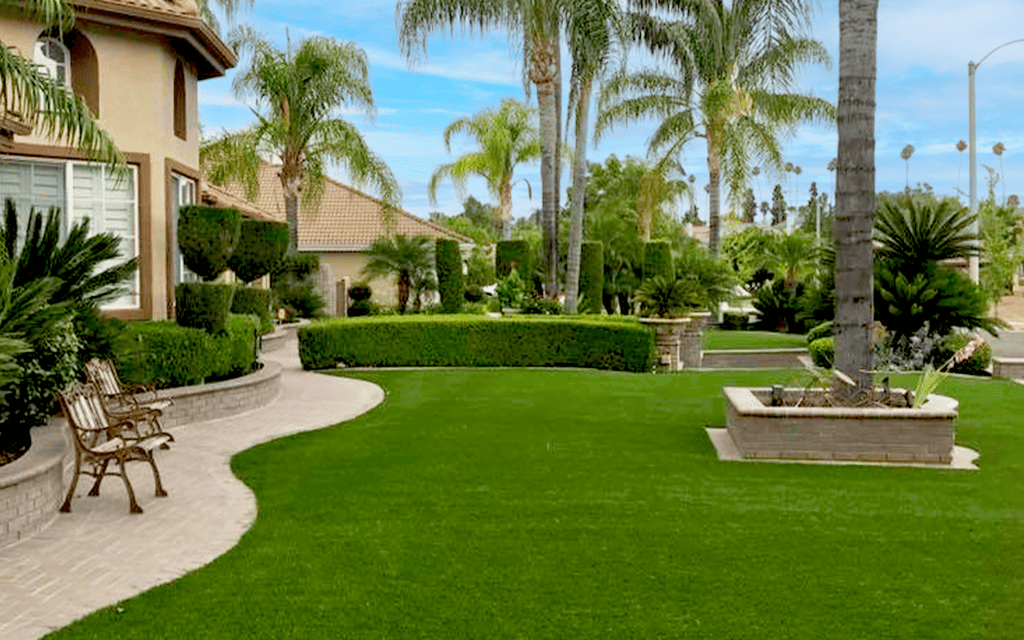
Artificial grass is typically classified according to the level of foot traffic it is designed to withstand, ranging from low to high. Here are the different types of synthetic grass based on foot traffic:
Low-traffic artificial grass: Meant for light use such as walking.
Medium-traffic artificial grass: Accommodates everyday activities like children’s play.
High-traffic artificial grass: Suitable for sports or heavy pet use.
Identifying high-traffic areas in your yard will help you choose the right type of artificial turf and plan maintenance accordingly.
Regular cross-brushing helps maintain your lawn’s appearance and prevents matting in areas with heavy use. You can also use tools like ball roll testing to reveal the degree of turf fiber compaction. With regular care and attention, you can make sure that your synthetic grass remains lush and vibrant for years to come.
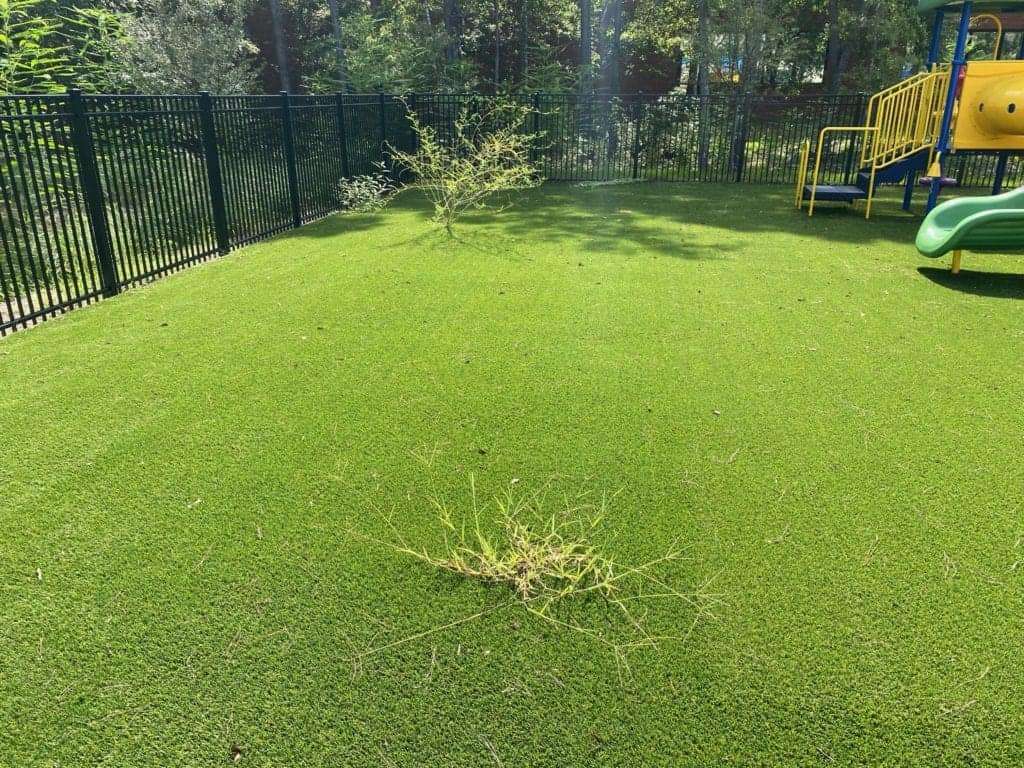
Regular cleaning and deodorizing will give you a fresh and visually appealing artificial lawn. Rinsing off natural debris and removing pet waste can prevent stains or odors. If you have pets, it is recommended to clean the artificial grass weekly using specialized non-toxic cleaning products with deodorizers to manage odors effectively.
You can even use a do-it-yourself solution made of half vinegar and half water to neutralize pet odors on your artificial turf. Regularly raking, especially in areas of heavy use, can not only prevent the compaction of infill but also contribute to the prevention of odor-causing bacteria.
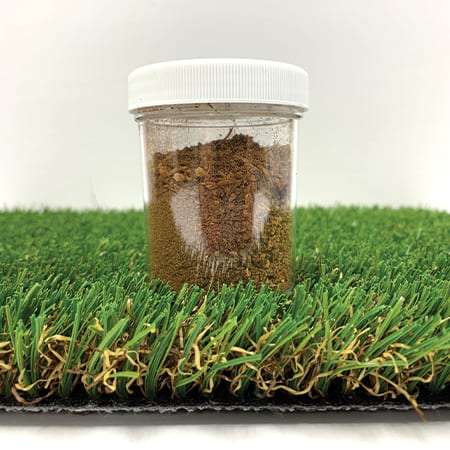
Infill management is another key aspect of maintaining synthetic grass. Typically, infill should be replenished every 5 to 7 years, or sooner if the artificial grass blades begin to look limp and flattened. Infill materials such as sand or silicon mixtures provide essential cushioning, extending the lifespan and functionality of your artificial turf.
To preserve the artificial turf’s cushioning effect and maintain its natural appearance, regular infill replacement is required. Contact ProGreen to learn how you can properly manage the infill for your artificial turf.
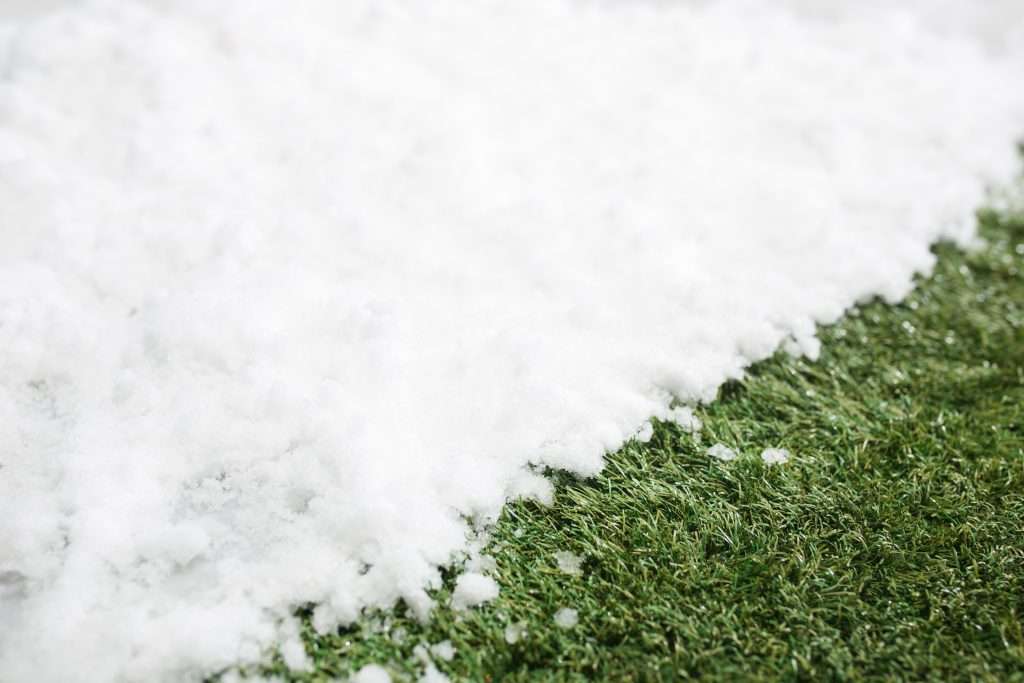
Just like a natural grass lawn, an artificial grass lawn is also subject to weather and environmental effects. Inclement weather can reduce the longevity of an artificial lawn, potentially requiring replacement. Direct sunlight, for instance, can accelerate the deterioration of artificial turf, particularly affecting lower-quality materials and installations.
However, ProGreen’s synthetic grass is manufactured to withstand these conditions far better than any other products on the market. Our goal is to provide a product that you can depend on no matter where you live. It is still a good idea to do what you can to maintain the turf properly.

Prolonged exposure to direct sunlight can cause artificial turf to heat up, potentially leading to the degradation of individual blades. One way to mitigate this is by rinsing your artificial turf with water every once in a while. This helps cool down the blades and prevents excessive heat buildup, maintaining the quality and appearance of the turf.
Apart from sun damage, artificial grass also has to battle other weather elements. Proper installation can prevent problems like misaligned seams, weeds, and drainage issues. Regular drainage testing can help ensure that the system and stone base drain properly, thus avoiding construction delays and additional costs.
The lifespan of artificial grass is influenced by many factors, including material quality, care, and usage. If you follow routine maintenance practices, you can maximize the longevity of your artificial grass lawn and enjoy a beautiful, green lawn all year round. Contact ProGreen today to learn about our products and see which one best suits you.
No, artificial grass is not high maintenance. But while it is extremely low maintenance, performing occasional TLC will help maximize its lifespan. Taking simple steps like clearing debris can help care for your synthetic turf lawn.
Yes, professional installation can significantly enhance the lifespan and aesthetic appeal of an artificial grass lawn. Improper installation can lead to issues that will hinder the longevity of your artificial turf.
To protect artificial grass from sun damage, it’s important to regularly rinse it to cool down the blades and prevent heat buildup.
You should replenish the infill of artificial grass every 5 to 7 years, or earlier if the blades start to look flattened. It’s important to maintain the infill to keep the artificial grass looking its best.